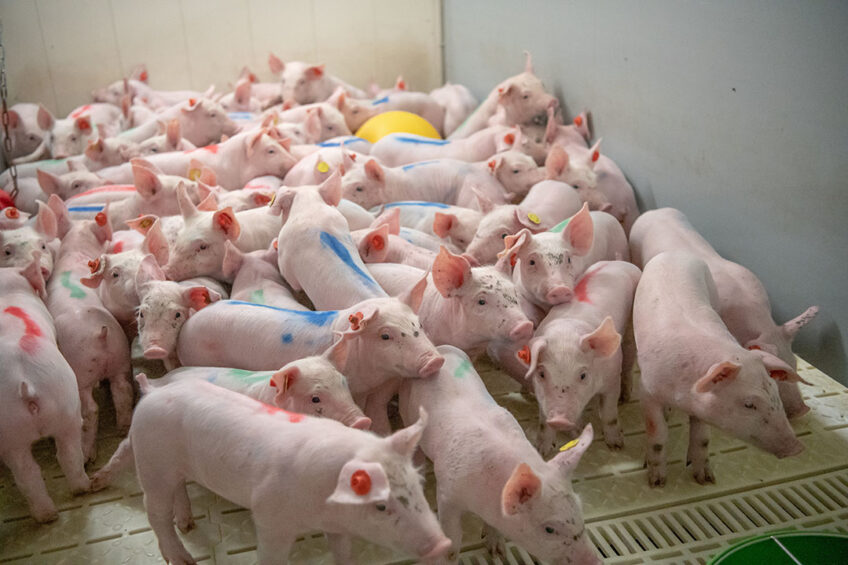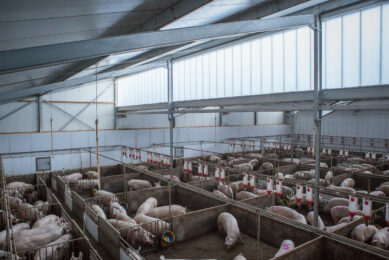Welfare quality through the piglet perspective

Good housing and good health are 2 of the main principles of welfare quality through the piglet perspective.
In recent years, animal products consumers demand higher welfare standards for piglets. Piglet welfare definitions vary depending on factors such as cultural, scientific, religious, and political background. It is assessed using various approaches with an emphasis on measurements such as the feelings-based approach, natural living, and the 5 freedoms. The Welfare Quality Protocol utilises physiological, health and behavioural criteria to assess the welfare of piglets.
Good housing
Good housing is one of the main principles to assess piglet welfare. It evolves around 2 criteria: comfort around resting and thermal comfort.
Comfort around resting
Comfort around resting is evaluated by manure on the body in piglets, which is an animal-based measure. Manure on the body is scored in both individual and group levels. In individual level: score 0 = up to 10% of the body surface is soiled, score 2 = more than 10% of the body surface is soiled. In group level: score 0 = no pigs in the litter with soiled body surface, score 1 = up to 50% of piglets in the litter have a soiled body surface, score 2 = more than 50% of piglets in the litter have a soiled body surface.
Thermal comfort
Thermal comfort is evaluated by 2 animal-based measures in piglets: panting and huddling.
Panting is defined as rapid breathing in short gasps through the mouth. A respiratory rate of more than 55 breaths per minute in piglets is considered as panting. Panting is scored in piglets in group level: score 0 = no panting, score 1 = up to 20% of resting piglets in the litter display panting, score 2 = more than 20% of resting piglets in the litter display panting.
The definition of huddling is when a piglet is lying with more than half of its body in contact with another piglet while they have more space available to them than they are occupying. Huddling is scored in group level: score 0 = no huddling behavior observed, score 1 = up to 20% of resting piglets in the litter display huddling behavior, score 2 = more than 20% of resting piglets in the litter display huddling behavior.
Good health
Good health is another main principle to assess piglet welfare. This also evolves around 2 criteria: absence of injury, and absence of disease.
Absence of injury
Absence of injury is assessed by lameness, an animal-based measure. This is the inability to use one or more limbs in a normal manner. Lameness is scored in group level: score 0 = all piglets in the litter have a normal gait, score 1 = one piglet in the litter displays moderate lameness, score 2 = more than one piglet in the litter displays moderate lameness, or at least one piglet in the litter displays severe lameness.
Absence of disease
Absence of disease is evaluated by coughing, sneezing, pumping, rectal prolapse, and splay leg.
Piglets must be observed for a period of 5 minutes, during which the number of coughs and sneezes are recorded in group level.
Pumping is defined as labuored breathing when it is easy to see the chest rising and falling with each breath. Pumping is scored in group level: score 0 = no pigs in the litter display evidence of labored breathing, score 1 = one pig in the litter displays evidence of labored breathing, score 2 = more than one pig in the litter is displaying evidence of labored breathing.
A rectal prolapse is when internal tissue extrudes from the rectum and it is scored in group level: 0 = no piglets in the litter with prolapse, score 2 = one or more piglets in the litter with prolapse.
Splay leg causes slight or partial paralysis of the hind limbs. This results in the inability to stand with the hind limbs being splayed apart. Splay leg is scored in group level: score 0 – no piglet in the litter with splay legs, score 1 =one piglet in the litter with splay legs, score 2 =more than a piglet in the litter with splay legs.











